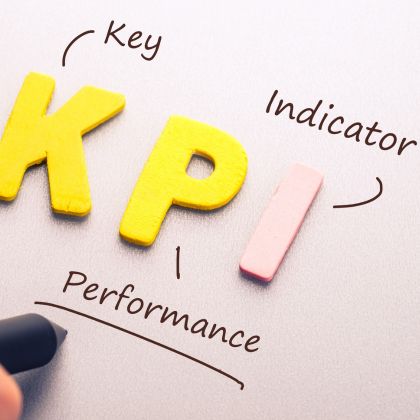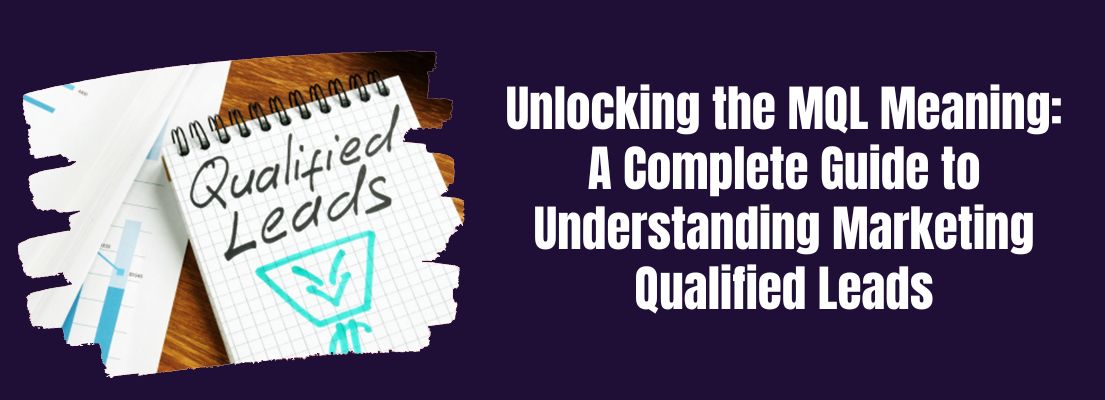Is your sales team optimized for success? Do you have a balanced mix of Sales Development Representatives (SDRs) and Business Development Representatives (BDRs)?
Understanding the key differences between these roles and how they complement each other is essential for any organization looking to build an effective sales team. We will decode the differences between SDRs and BDRs, discuss their roles and primary responsibilities, and provide tips for nurturing talent and fostering collaboration within your sales team in this blog post. Let’s dive into the topic of SDR vs BDR.
Key Takeaways
- SDRs and BDRs have distinct roles in the sales team, with SDRs managing inbound leads and BDRs focusing on outbound prospecting.
- A company’s needs should be assessed to find the optimal balance of SDR/BDR personnel for maximum performance.
- Training & development programs, as well as clear career advancement paths, are essential for nurturing talent & achieving success.
Understanding the Roles: SDR and BDR
The sales team is the lifeblood of any organization, driving revenue and growth. Two critical roles within this team are sales development representatives (SDRs) and BDRs, who work together to generate leads and move prospects through the sales funnel. While the roles share some similarities, they are distinct when it comes to the specifics of their responsibilities.
SDRs are primarily responsible for managing inbound leads, working closely with marketing and sales teams to engage prospects and move them through the sales pipeline. On the other hand, BDRs focus on outbound lead prospecting and creating new business opportunities.
We will now delve into the main responsibilities of these roles.

Sales Development Representative (SDR)
As the first point of contact with prospective customers, SDRs play a crucial role in:
- Qualifying inbound leads
- Nurturing relationships with potential clients
- Collaborating with marketing and sales teams to engage prospects
- Creating a strong foundation for the sales process.
A typical day for an SDR involves:
- Making phone calls
- Sending emails
- Conducting research
- Prospecting for new clients
Their primary focus is on inbound lead qualification, ensuring that the leads generated by marketing efforts, including outbound leads, are suitable for the company’s products or services. This process of qualifying inbound marketing leads helps in identifying the most promising prospects for the business.
Business Development Representative (BDR)
While SDRs focus on inbound leads, BDRs are responsible for:
- Generating new business opportunities through outbound prospecting, networking, and relationship building
- Targeting potential clients and partners
- Seeking to develop strategic relationships that can lead to long-term business growth.
BDRs employ techniques to identify and engage with potential leads, including cold calling, social selling, and attending networking events and tradeshows. As they build relationships with potential customers, they work to understand their needs and demonstrate the value of the company’s products or services, ultimately adding potential clients to the sales pipeline.
Key Differences Between SDR and BDR

Having outlined the main duties of SDRs and BDRs, we will now examine the fundamental differences between these roles:
- SDRs mainly manage incoming leads
- BDRs focus on outward prospecting to create new business opportunities
- SDRs prioritize the quantity of leads and initial contact
- BDRs stress the quality of leads and creating long-term connections
SDRs concentrate on selling products or services, whereas BDRs work on constructing strategic relationships with potential customers and partners. Understanding these differences is essential for building an effective sales team, as it allows you to allocate resources and responsibilities appropriately, ensuring that all aspects of the sales process are covered and no opportunities are missed.
Inbound vs Outbound Prospecting
The primary distinction between SDRs and BDRs lies in their approach to prospecting. SDRs focus on inbound leads, managing and qualifying leads generated through marketing efforts, such as email campaigns, newsletter signups, and social media engagement. They play a vital role in lead qualification, ensuring the right prospects are engaged and moved through the sales pipeline.
Conversely, business development representatives (BDRs), also known as business development reps, specialize in outbound prospecting, proactively engaging potential cold leads through cold calling, emailing, and attending trade shows. They aim to create interest in the company’s products or services and develop a sales pipeline of potential clients and partners.

Quantity vs Quality of Leads
Another key difference between SDRs and BDRs is their focus on lead quantity versus lead quality. SDRs prioritize generating a high volume of leads, utilizing various strategies such as sales intelligence, competitor analysis, and SEO to identify and convert prospects. Their goal is to maximize the number of leads in the pipeline, improving the chances of finding potential customers and closing deals.
In contrast, BDRs emphasize the quality of leads and the cultivation of long-term relationships. They implement lead scoring systems to prioritize leads based on quality, focusing their efforts on the leads most likely to convert into customers. This approach ensures that the BDRs’ time and resources are spent on the most promising leads, leading to higher conversion rates and more successful deals overall.
Sales vs Business Development Focus
SDRs and BDRs also differ in their overall focus within the sales process. SDRs concentrate on selling products or services, engaging with prospects, and providing the sales team with the time and resources needed to close deals effectively. Their primary goal is to meet sales targets and generate revenue for the company.
On the other hand, BDRs focus on:
- Developing strategic relationships with potential clients and partners
- Seeking to create new business opportunities and extend the company’s market reach
- Working to identify untapped markets, investigate new opportunities, and construct strategies to drive growth and increase market share
In essence, sales focus is more transactional and revenue-driven, while business development focus is more strategic and centered on long-term growth and expansion.
Building an Effective Sales Team: Balancing SDRs and BDRs

Building an effective sales team requires a balance of SDRs and BDRs tailored to your company’s specific needs and objectives. The right mix of these roles can help you optimize your sales process, maximize lead generation, and ensure that no opportunities are missed.
Achieving this balance necessitates evaluating your company’s needs, which includes considering your sales team’s size, the nature of the leads you’re targeting, and the resources at your disposal. Additionally, fostering a collaborative environment between SDRs and BDRs can help ensure a seamless handoff of leads and prospects throughout the sales process.
Assessing Your Company’s Needs
To determine the right mix of SDRs and BDRs for your organization, start by evaluating your current sales process and lead generation strategies. Consider the types of leads you are targeting (inbound or outbound), the quantity of leads, and the quality of leads. Analyze the number of meetings and opportunities handled by your SDRs and BDRs and evaluate the success rate of those meetings and opportunities.
Additionally, take into account your overall business goals and objectives, as these will influence the emphasis and priority placed on various components of the sales process. You can identify the optimal balance of SDRs and BDRs to maximize your sales performance and achieve your desired growth by conducting a thorough assessment of your company’s needs.
Creating a Collaborative Environment
Fostering a collaborative environment between SDRs and BDRs is key to ensuring a seamless handoff of leads and prospects throughout the sales process. You can facilitate mutual accountability and improve the overall efficiency of your sales process by promoting open communication and teamwork.
Some strategies for creating a collaborative environment include establishing clear expectations, setting achievable goals, and providing ongoing training and development opportunities. You can create a cohesive sales team that works together to achieve common goals and drive growth for your organization by investing in the success of both SDRs and BDRs.
SDR and BDR Performance Metrics and Compensation
Monitoring performance metrics and offering competitive compensation are essential for retaining top SDR and BDR talent. Key performance indicators (KPIs) for both roles may include the number of leads generated, conversion rates, and sales-qualified appointments.
Compensation structures for SDRs and BDRs typically consist of a base salary plus commission or bonuses tied to performance metrics. You can incentivize your sales team to continuously strive for excellence and achieve their sales targets by aligning compensation with performance.

Key Performance Indicators (KPIs)
KPIs are instrumental in gauging the performance of SDRs and BDRs, offering valuable insights into the success of their sales efforts. Some common KPIs for SDRs include the number of qualified leads generated, conversion rate from lead to opportunity, and number of meetings scheduled.
For BDRs, KPIs may include the number of qualified opportunities, the number of closed/won deals, and the amount of revenue generated. You can ensure that your sales team is focused on the right activities and continuously working to improve their performance by tracking these KPIs.
Compensation Structures
A competitive compensation structure is vital for attracting and retaining top SDR and BDR talent. The typical compensation structure for these roles consists of a base salary plus commission or bonuses correlated to performance metrics. The exact design of the compensation structure may vary depending on the company and industry.
For example, the median on-target earnings for SDRs and BDRs is $80,000. A competitive compensation package may also include benefits such as health insurance, variable pay based on the number of qualified opportunities, and bonuses and perks to reward exceptional performance.
Tips for Success: Nurturing SDR and BDR Talent

Nurturing SDR and BDR talent is crucial for long-term success. You can ensure that your sales team remains up-to-date on industry trends, sales techniques, and product knowledge by providing ongoing training and development opportunities. In addition, creating clear career advancement opportunities within your organization can help motivate your sales team to excel and take on more responsibilities as they gain experience and demonstrate success.
We will now discuss some strategies for offering training and development opportunities and promoting career progression within your organization.
Training and Development
Continuous investment in training and development programs is imperative to keep your SDRs and BDRs abreast of industry trends, sales techniques, and product knowledge. You can ensure that your sales team has the necessary skills and knowledge to excel in their roles by offering training options, such as workshops, online courses, and mentorship programs.
Some popular training programs for SDRs and BDRs include:
- HubSpot Sales Academy
- Coursera Professional Certificate in Sales Development Representative
- Tenbound Way™ Sales Development Training System
- Udemy Ultimate Sales Development Rep Training Program
These programs offer valuable training and skills development for both SDRs and BDRs.
Career Advancement Opportunities
Creating clear career advancement opportunities within your organization is vital for retaining and motivating top SDR and BDR talent. You can demonstrate your commitment to your sales team’s growth and success by providing well-defined career paths and promoting from within.
Some common career progression options for SDRs and BDRs include roles such as:
- Account Executive
- Customer Success
- Account Manager
- Marketing
- Channel sales
- Strategic positions
Encouraging your sales team to strive for excellence continuously will ultimately drive your organization’s success through the fostering of a culture of growth and advancement.
Summary
In conclusion, understanding the roles and key differences between Sales Development Representatives and Business Development Representatives is vital for building an effective sales team. You can optimize your sales process and drive growth by balancing SDRs and BDRs, assessing your company’s needs, and fostering a collaborative environment. Additionally, investing in ongoing training, development, and career advancement opportunities can help you nurture and retain top SDR and BDR talent, ensuring long-term success for your organization.
Frequently Asked Questions
What is BDR vs SDR vs ADR?
Sales Development Representatives (SDRs) focus on identifying and connecting with leads, while Business Development Representatives (BDRs) conduct outbound prospecting and Account Development Representatives (ADRs) focus on prospecting existing accounts.
What is the difference between SDR and MDR?
Sales development representatives (SDRs) focus on identifying and qualifying leads, while MDRs take up a more nurture-focused role as an educator and partner. SDRs hunt for leads to convert immediately, while MDRs spend time talking and supporting leads directly.
What is an SDR and AE?
An SDR (Sales Development Representative) is responsible for outbound prospecting and lead generation, while an AE (Account Executive) focuses on nurturing leads and closing sales. Together they form the foundation of a company’s sales cycle.
Is a BDR a good job?
A BDR role is a great opportunity to gain invaluable skills and launch your sales career. It’s also highly transferable and can benefit you in other aspects of life.
How can I balance the number of SDRs and BDRs in my sales team?
Assess your company’s needs and available resources to determine the size of your sales team, the types of leads you are targeting, and the right balance between SDRs and BDRs.





